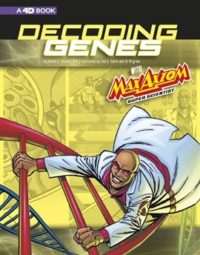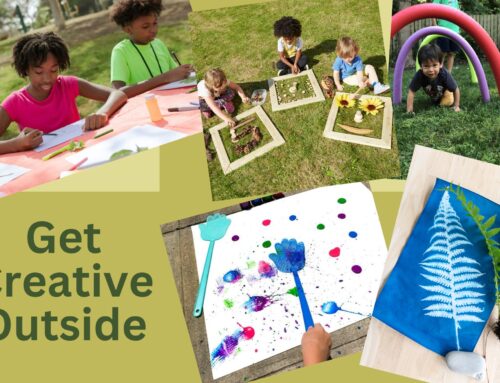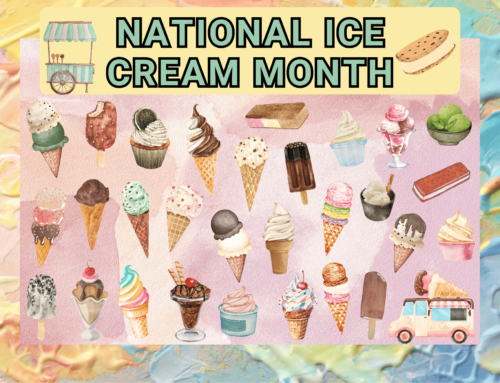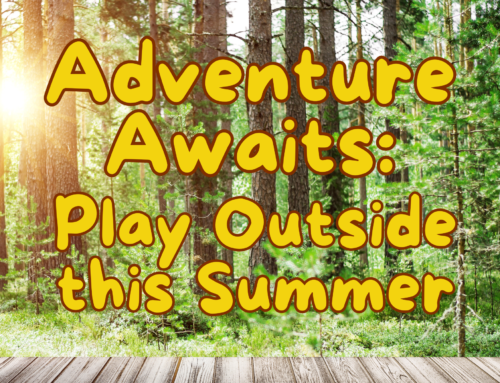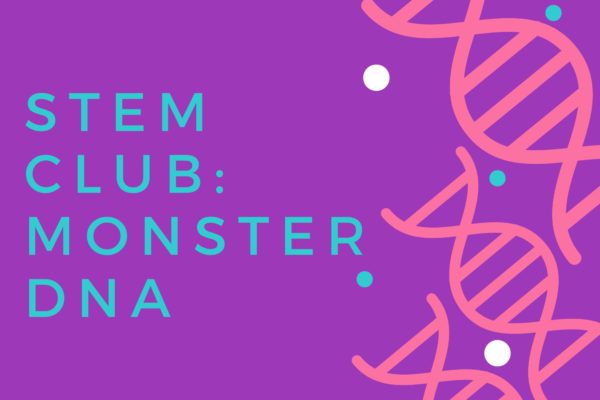
Let’s learn all about how cells use DNA like a blueprint to build living things! We will start by learning about the basics of DNA and how all those instructions are written with only 4 different molecules. That’s like having an entire alphabet with only 4 letters! Once we learn the basics, you can play a Monster Maker Game from Arizona State University.
How to Build a Monster
If you wanted to build a monster, a plant, or an animal, where would you start? Where do architects start when they are building a house? The best place to start if you are building a house, or any living thing, is with instructions. For a house, this usually comes in the form of a large blueprint that maps out all the rooms, their location, and how much space they each have. For plants, animals, and even monsters, there are teeny, tiny instructions that we call our genetic code that acts as our blueprint.
These instructions are held in each cell of every living organism. Cells are the compartments that make up all of the tissues in our body, like skin and bones, and most are so small they cannot be seen without a magnifying glass or microscope. If you unravel the DNA in each of these cells, the genetic code can be stretched out to over 6 feet long! Within this strand is all the information required to build and keep an organism alive. These instructions are made of various combinations of only 4 different molecules.
DNA is the material that carries all the information about how a living thing will look and function. For instance, DNA in humans determines such things as what color the eyes are and how the lungs work. Each piece of information is carried on a different section of the DNA. These sections are called genes. DNA is short for deoxyribonucleic acid. It is in every cell of every living thing.
DNA has a complex structure. It is made of chemical substances that are linked together like a chain. Each piece of DNA has two long strands or chains. The two strands are joined together. They form a shape like a ladder that has been twisted into a spiral.
Chemicals called phosphates and sugars make up the sides of the ladder. DNA also has chemicals called bases. Each base on one strand is joined to a base on the other strand. The linked bases form the rungs of the ladder.
There are four different bases in DNA: adenine, thymine, guanine, and cytosine. These four chemicals are repeated in different orders over and over again in each strand of DNA. Human DNA contains about 3 billion pairs of these bases. This base pairing is very specific—because of their structures, an adenine can only pair with thymine, and cytosine can only pair with guanine. Thus joined, the ladder-shaped DNA strands are coiled around each other, forming a spiral or double helix.

Combinations of Molecules
Molecules are tiny compounds of smaller atoms, which are the smallest units of matter that still act as an element, such as oxygen or carbon. DNA strands are made of long connections of different combinations of 4 molecules, which we can think of as letters or colors. For example, let’s take 2 colors: yellow and red. If you are allowed to make a string of 3 colors, let’s see how many different combinations you can make.
Let’s start with just one color: yellow. What combinations can we make? Only one, right?
![]()
The whole thing would have to be yellow since that’s the only color we have.
What if we add a second color? Let’s add red. Now, how many combinations can we make?
![]()
So all together, using yellow and red, we already have 8 different combinations we could make.
If we had 3 colors, we could make 27 combinations.

If we had 4 colors, we could make 64 combinations. Each of these combinations gives a unique instruction to the cell.

This table shows how many different orders of combinations you can make with different string lengths and different numbers of colors:

What’s really amazing is how complex these instructions can be, using only 4 different colors. If we put some of these 3-color combinations together, as if we were putting different letters together to make words, we could make even more combinations.
Let’s think again about our 4 colors that can stand for different DNA molecules… red, yellow, blue, and green. These colors could join together like colored beads in a long necklace (or strand), hundreds or thousands of beads long.
One more thing to think about when you are imagining these necklaces is that DNA actually has two strands of colors, or molecules, that are connected, with certain colors almost always sticking together. For example, red would go with yellow, and blue would go with green.
Once we have these long, double strands, we have long sections in them that we call “genes.” A gene is a section of DNA that decides what traits we will have, such as if our eyes will be blue or what color our hair is. Monster DNA might decide if they have polka-dots on their body or if they have one or two eyes or horns.
Scientists Use DNA to Try to Fight Disease
Using computers that can search through the long, long instruction set, or code, that makes up human DNA, scientists try to find patterns in the instructions. Most of the time, scientists expect humans to have the same code as each other.
However, even for important traits like the structure of your cells, sometimes a single DNA molecule will be different than it should be, or there can be missing or extra molecules. These are called DNA mutations, which means the DNA is changed. By finding these mistakes in the pattern, scientists may learn what part of the code may be causing problems, such as different diseases, or which instructions may help a person to avoid disease.
Click Here to Play Monster Maker from Arizona State University
To learn even more about DNA, check out some of these great resources from the library!
The DNA Book by Alison Woollard
It’s inside every living plant and animal, from the tiniest seed to the person standing next to you, but how much do you know about DNA? This book gives children an in-depth look at DNA and its role in all living things — from why we have different-colored eyes to why we age. Discover what DNA is, what it does, and how it shapes our lives, including inheritance and why we look like our parents; forensic science and how DNA evidence helps catch criminals; and genetic engineering and if we could bring dinosaurs back to life. With fun illustrated DNA characters, clear diagrams, and astonishing photographs, children will love learning about themselves and this all-important molecule.
Grow: Secrets of Our DNA by Nicola Davies
An introduction to genetic code combines simple, engaging language and expressive, child-friendly illustrations to explain how biological life grows and changes and how DNA combines to make humans both unique and connected to all life on the planet.
Decoding Genes with Max Axiom, Super Scientist by Amber J. Keyser Available On Hoopla
Part of the Graphic Science series
Rosalind Franklin: Unlocking DNA by Megan Borgert-Spaniol
Learn about chemist Rosalind Franklin from her early career in coal research ans x-ray crystallography to her groundbreaking phot that showed the structure of DNA.
Genetics: Unlocking The Secrets of Life by Jillian Lokere
The Human Genome Project — A gardener discovers genes — Making sense of Mendel — Mapping genes to chromosomes — Genes, proteins, and DNA — The double helix — Cracking the code of life — Editing the words of life — The future of genetics.



